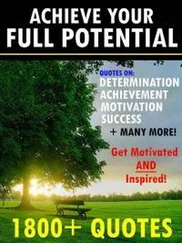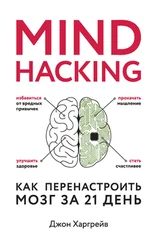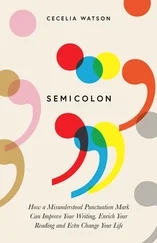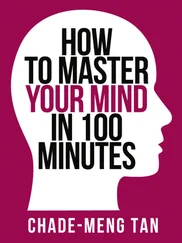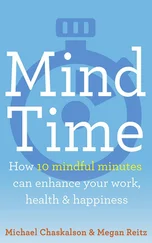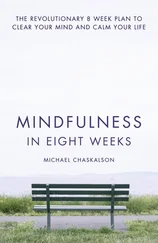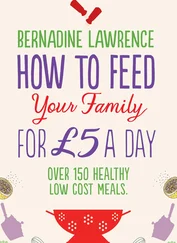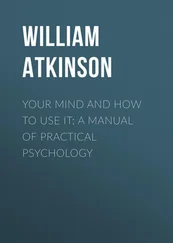All these systems are based on tiny subgoals: complete this mission, finish this level, make it through this challenge. As we discussed at the beginning of this book, the geek mind loves to control and possess a small portion of the world, to know everything there is to know. It drives my kids crazy when we’re playing a video game together and I have to find every hidden treasure, unlocking 100 percent of the characters and costumes. But this is the fun of video games: mastering tiny goals that give us tiny rewards, until one day we’ve conquered the game.
When we think of our personal subgoals like the missions in video games, we can shift our mind-set from “work” to “fun.” After all, video games are a kind of work: you have to learn new skills, think through problems, and compete hard against other players. But somehow it doesn’t feel like work, because there are tangible rewards along the way: you can see how far you’ve come.
Whatever your geek passion, whether it’s collecting comics, learning LARPing, or studying stars, there’s a feeling of accumulation, a feeling of mastery. Putting your tiny goals into this same mental model—whether it’s earning points or collecting power-ups or completing 100 percent of your missions—is one of the best mind hacks I can recommend. Seeing your tiny goals as a geeky challenge keeps you motivated.
Game designer Jane McGonigal sees life itself as a kind of video game. In her famous TED talk titled “The Game That Can Add 10 Years to Your Life,” McGonigal shared how she used game thinking to heal herself from a debilitating head injury. After receiving a concussion that left her suffering from nausea, headaches, and mental fog, the advice from her doctor was just to let her brain rest: no reading, writing, or video games. “In other words,” she jokes, “no reason to live.” 8
She did, in fact, begin to suffer from suicidal thoughts, which is common with traumatic brain injuries. The thoughts began to grow so pervasive and intense that they finally led her to a life-changing moment. “I am either going to kill myself,” she vowed, “or I’m going to turn this into a game.”
She created a mental game for herself called Jane the Concussion Slayer. This was a mind hack where she awarded herself points for avoiding “bad guys” that triggered her symptoms (bright lights, crowded spaces) and more points for collecting power-ups that helped her heal (getting out of bed, taking a walk). Within a couple of days, she reports, the fog of depression and anxiety went away. While the cognitive symptoms and headaches took another year to heal, the game gave her the power to focus on tiny goals that eventually helped her achieve the big goals.
This experience was the basis of not only McGonigal’s TED talk but also her New York Times best-selling book, Reality Is Broken: Why Games Make Us Better and How They Can Change the World . In it, she argues that many of the world’s greatest problems, from childhood obesity to global warming, can be solved by approaching them as video games: making tiny goals and achievements that, over time, can lead to epic wins.
Throughout Mind Hacking , we’ve been presenting our exercises as Mind Games, because there is a gamelike component to mastering the mind: we must develop unfamiliar skills in a virtual world, working toward long-term goals while focusing on beating the current level. Now, as we move out of our mind and into the world, you can assign points to setting and achieving specific subgoals, which keeps you motivated until you finally conquer the boss level and look with satisfaction at the end credits.
MIND GAME
The LASER
Each day, after your concentration game, write down your positive loops, then spend sixty seconds in mental simulation on one goal. Then write down one LASER-focused subgoal that will move you toward that goal, asking yourself, “What’s the next baby step?”
Write down and check off each subgoal on your practice sheet.
Pushing the Swing
Think about pushing a child on a swing set. If you want to get the kid swinging higher, when do you push?
You get the most swing for your push if you do it at the beginning of the upswing —just as the child comes back and starts heading in the other direction. If you try pushing while the child is flying back toward you, your energy is wasted: you will actually slow down the swing , and possibly break your finger.
Now, that’s a weird concept. It’s the same amount of force but, applied at one time on the swing cycle, it pushes the child higher, and at another time it slows the kid down. The swing, which is a pendulum, has a natural interval, a kind of beat or tempo. Pushing the swing in time with this tempo will cause it to go higher. In other words, small pushes, when timed correctly, can have big effects .
In physics, this is called resonance, the natural tendency of objects to vibrate in sync with some external force. This concept is to be found throughout nature. Objects like organ pipes, quartz crystals, and, yes, LASER rods operate on the principle of resonance. Pluck the string on an acoustic guitar, and you’re hearing the sympathetic vibrations of the finely crafted guitar body, which is why it sounds so much more beautiful than a rubber band stretched across a cardboard box.
Acoustic resonance is how you can shatter a crystal wineglass with sound played at the right resonant frequency: the glass molecules will vibrate in sync with the sound waves until eventually the glass breaks apart. There is also tidal resonance , such as in the Bay of Fundy off Maine, where the continental shelf is a width that amplifies the natural resonance of the ocean, causing the highest tidal range in the world. There is orbital resonance , where two orbiting bodies exert a regular gravitational pull on each other, such as that found between Earth and Venus.
Resonance is so pervasive that Nikola Tesla once wrote, “If you want to find the secrets of the universe, think in terms of energy, frequency and vibration.” Which brings us back to our concept of tiny repeatable goals: when timed correctly, they can have big effects.
I’ve always been a hard worker, even back in the days when I smoked a lot of marijuana. I was not the stereotypical stoner watching cartoons while eating Twinkies filled with Cheez Whiz. First, the Twinkies were usually filled with Nutella. Also, the weed gave me a kind of creative inspiration, the constant aha! moments that fueled me to be even more creative. So I would always be working, following whatever ridiculous ideas my pot-soaked brain would dream up.
While this occasionally produced some genuine inspiration, I see now that there was a lack of coherence to my efforts: one day I would be excited about creating a new social media project, the next day a T-shirt line. Most bakeheads are unable to see any projects through to completion, so I figured those rules didn’t apply to me, because I was able to get so much stuff done.
However, getting stuff done is not nearly as important as getting the right stuff done. Much of the time I was pushing against the swing, pushing the kid out of the swing, or running underneath the child and getting bludgeoned by the swing. I was bewildered by how I could be working so hard and yet making so little progress. One of the tremendous gifts that sobriety gave me was the clarity to see the tiny goals that could have the biggest impact on my overall goals—and this plays out in every area of my life.
It started with the daily goal of staying sober. Before sobriety, I spent an incredible amount of time thinking about how and when I was going to get high. I didn’t want anyone to notice it, so I had to plan my day around finding a convenient place, getting rid of the smell, trying to act normally afterward—a cycle that would often be repeated several times a day . This consumed a ridiculous amount of mental energy.
Читать дальше
![Джон Харгрейв Mind Hacking [How to Change Your Mind for Good in 21 Days] обложка книги](/books/404192/dzhon-hargrejv-mind-hacking-how-to-change-your-min-cover.webp)

